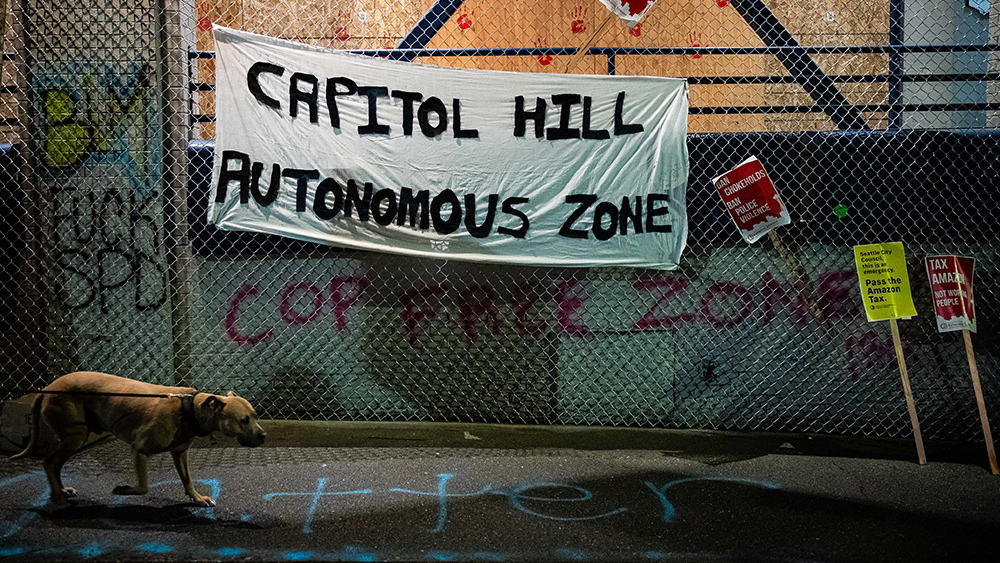
Archaeologists in China have discovered a secret underground bunker used by Japanese scientists from the infamous Unit 732 to carry out horrific experiments on humans during World War II.
The said "horror bunker" was found near the city of Anda in the northeastern Chinese province of Heilongjiang by researchers from the Heilongjiang Provincial Institute of Cultural Relics and Archaeology. They told the South China Morning Post that the finding "highlights the ongoing legacy of Unit 731's atrocities and their impact on global efforts to prevent biological warfare."
The archaeologists have only partly discovered the U-shaped structure measuring about 108 feet long and 67 feet wide, with interrelated rooms and tunnels splitting from it. While the specific purpose of each room in the Anda complex hasn't been established, the archaeologists have designated what they think to be laboratories, observation and dissection rooms, holding cells, barracks, garages, bath houses, dining areas and wells.
Based on historical records, the site was built in 1941 and used by the Imperial Japanese Army's (IJA) infamous Unit 731. It was supervised by the Bacteriological Warfare Department, which mainly experimented on living people held in special prisons.
The Anda site was the unit's biggest, best equipped and most frequently used test location. However, it was destroyed by the IJA itself alongside other facilities in August 1945 to erase proof of horrendous experiments. Prior to the dig, its exact location had been lost to time.
Archaeologists believe human subjects were brought for observation and dissection after they were infected with disease or exposed to chemical agents. They said that while not very large, the rooms are big enough to indicate the cluster was a laboratory.
According to an official report on the find published in Northern Cultural Relics back in May of this year, the discovery of the underground laboratory could lead to fresh evidence about Japanese war crimes. Nevertheless, the archaeologists who found the site said they will continue to dig the area and gather more information about the structure's rooms.
Unit 731 conducted horrendous human experiments at Anda site
Unit 731, the division that operated at the Anda site, began in 1931 as a Japanese-run public health unit. From its initial foray into public health, the unit expanded its research to involve grotesque biological and chemical warfare experiments. Unit 731 mainly used Chinese, Korean, Russian and American prisoners of war as test subjects.
Up to 12,000 men, women and children were killed by Unit 731's cruel experiments which consist of the testing of grenades, bacterial bombs, flamethrowers and chemical weapons. Individuals were also exposed to dehydration, murdered inside spinning centrifuges, injected with animal blood, terminated with X-rays, vivisected minus anesthesia and preserved inside low-pressure chambers until their eyeballs exploded.
Infected fleas developed and bred in Unit 731's labs were also released by low-flying aircrafts over Chinese cities, creating disease outbreaks that killed hundreds of thousands of people. Sakaki Hayao, the former commander of Unit 731's Lin Kou branch, depicted an "extremely cruel" experiment carried out at Anda field just a few months before the Japanese surrender.
Hayao recounted seeing people tied to wooden poles and exposed to anthrax through bombs loaded with the bacteria that were dropped from a plane or detonated at close range. This incident formed part of his testimony before the Shenyang special military tribunal in 1956.
After Japan's surrender in September 1945, the U.S. concealed evidence of the horrible experiments and secretly allowed several of Unit 731's leaders immunity from prosecution for war crimes in exchange for their research. A lot of this information was later taken to Fort Detrick in Maryland, the facility of the U.S. Cold War biological weapons program between 1943 and 1969. (Related: Col. Lawrence Sellin: Lab-created COVID-19 is part of China's biowarfare program.)
Visit HiddenHistory.news for more stories like this.
Watch this video about the human experiments that people would never believe happened in America.
This video is from the Truth Matters channel on Brighteon.com.
More related stories:
Scientists pressuring FDA to approve use of bioengineered animal organs in human transplants.
Sources include:
Please contact us for more information.














